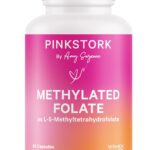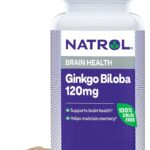Brighten Up: How Retinol Spot Treatment Can Help Fade Melasma
Understanding Melasma
Melasma is a common skin condition characterized by patches of discoloration on the face, often triggered by hormonal changes, sun exposure, and genetic predisposition. It is a chronic condition, affecting millions of people worldwide, and can be challenging to treat. The patches typically appear on the forehead, cheeks, and upper lip, and can range in color from light brown to dark brown or gray.
The Power of Retinol
Retinol is a derivative of vitamin A, known for its ability to stimulate cell turnover, reduce fine lines and wrinkles, and promote collagen production. When used as a spot treatment, retinol can target specific areas of the skin, such as melasma patches, to help lighten and fade them. This is because retinol increases the production of ceramide, a natural moisturizing factor that helps to reduce inflammation and improve skin texture.
How Retinol Spot Treatment Works
When applied directly to melasma patches, retinol spot treatment can help to:
- Exfoliate the skin, removing dead skin cells and promoting cell turnover
- Inhibit the production of melanin, the pigment responsible for skin darkening
- Reduce inflammation, which can contribute to melasma development
- Stimulate collagen production, helping to improve skin elasticity and firmness
Tips for Using Retinol Spot Treatment
To get the most out of retinol spot treatment for melasma, follow these tips:
- Apply a thin layer of retinol cream or serum to the affected area, using a gentle, massaging motion
- Start with a low concentration of retinol (around 0.25%) and gradually increase as your skin becomes more tolerant
- Use retinol spot treatment at night, allowing the active ingredients to penetrate the skin while you sleep
- Be patient, as retinol can take several weeks to several months to produce noticeable results
Combining Retinol with Other Skincare Products
For optimal results, consider combining retinol spot treatment with other skincare products that promote skin brightness and even tone. These may include:
- A broad-spectrum sunscreen with at least SPF 30, applied daily to prevent further darkening of the skin
- A vitamin C serum or cream, which can help to brighten and even out skin tone
- A gentle exfoliating scrub or chemical exfoliant, used 1-2 times per week to remove dead skin cells and promote cell turnover
Potential Side Effects
While retinol is generally considered safe and effective, it can cause some side effects, particularly during the initial stages of treatment. These may include:
- Redness and irritation
- Dryness and flakiness
- Sensitivity to the sun
- Mild itching or stinging
Precautions and Contraindications
Before using retinol spot treatment for melasma, consider the following precautions and contraindications:
- If you have sensitive skin, start with a low concentration of retinol and gradually increase as needed
- If you are prone to acne, be cautious when using retinol, as it can exacerbate acne in some individuals
- If you are pregnant or breastfeeding, consult with your healthcare provider before using retinol products
- If you have rosacea, eczema, or other skin conditions, consult with your healthcare provider before using retinol products
Conclusion
Retinol spot treatment can be a powerful tool in the fight against melasma, helping to lighten and fade patches of discoloration on the skin. By understanding how retinol works, following proper usage guidelines, and combining it with other skincare products, you can achieve optimal results and enjoy a brighter, more even-toned complexion. Remember to be patient, as retinol can take time to produce noticeable results, and consult with your healthcare provider if you have any concerns or questions.



















